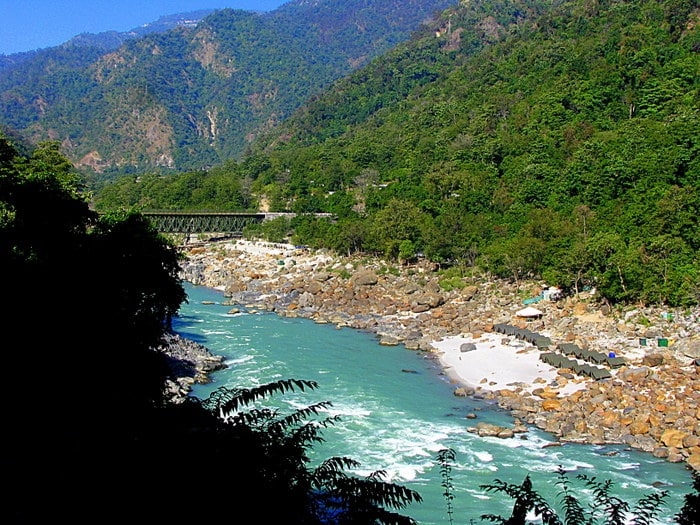Since ancient times, saints, pilgrims, and common people have visited Rishikesh in the search for higher calmness and spirituality. It is the hub of holy places, where Lord Shiva and Lord Krishna are worshipped along with other deities. The place acquires a universal meaning and calmness to every living being, irrespective of the age group. The walls of the great Geeta Bhawan offer a beautiful illustration of the stories of the epic Ramayana and the Mahabharata; for the younger generation. The four different stretches offer the experience of worldwide sports like rafting for tourists. Another category- the pilgrims worship Lord Shiva and gain a higher knowledge of spirituality and Yoga.
What makes things more peaceful is that the monument of deities is considered as both: living beings and mascots like:
As Living Beings: Pujari, the priest, carefully attends the deities: they are fed, bathed, clothed, and offered beds for taking rest. The Lord is believed to enter into their forms to accept the worship of His devotees.
As Mascots: Deities are considered to be like clocks: that are representatives of time. Clocks can be destroyed, so can be done with deities. But, the time and presence of God can be destroyed.
Free and Paid: Accommodation in Rishikesh
One of the best-paid accommodations includes camps and rooms on the Brahmpuri site. Visitors get shelter at Brahmpuri sites in the camps, that is raw and provide an unmatched feeling of closeness to the ecosystem and panorama of nature

Whereas, unpaid includes free rooms provided by temples that have a lot to offer. Free rooms in the temple provide a holy vibe. These rooms are maintained by the wealthy, to promote spiritual upliftment. The result is genuinely happy people, among both the verticals; one who believes in western cultures, one with a deep sense of security as well.
Yoga and Spirituality: The Sivananda Ashram and the Parmarth Niketan Ashram are foundations that offer the practice and training of yoga and meditation. They help in recognizing the core purpose of a soul.
The Origin of Ganges
According to Mythology, River Ganges is born of all the sacred waters, personified as the goddess Ganga. When the dwarf Brahmin Incarnation of God, ‘Vishnu’ the Vamana took two steps to cross the universe, the second step accidentally created a hole in the wall of the universe. It spilled some of the waters of the River Mandakini. A droplet was caught by Lord Shiva, who kept it in his hair for some time and then released it, and it became the River Ganges, which runs down through all the fourteen worlds.

Geographically, it originates in the Himalaya Mountains at Gomukh, the terminus of the Gangotri Glacier. When the ice of this glacier melts, it forms the clear waters of the Bhagirathi River. As the Bhagirathi River flows down the Himalayas, it joins the Alaknanda River, officially forming the Ganges River.
A 30-Second Peak to Spiritual Rishikesh
Several structures and idols of Shiva are observed when exploring the city. Many temples have been devoted to Lord Shiva like Trimbakeshwar Temple. It also has two bridges- the Lakshaman Jhula, the ancient one, and the Ram Jhula. They offer a futuristic view of the city. The Lakshaman Jhula is believed to be ancient since the Lakshaman crossed the Ganges on jute rope where the bridge was built. To date, it has been constructed twice.
Overall, Rishikesh offers an opportunity for a spiritual and adventurous tour deeply rooted in Indian mythology, history, and heritage.
Also Checkout: 6 Best Places To Visit In India During the Month Of Ramzan












